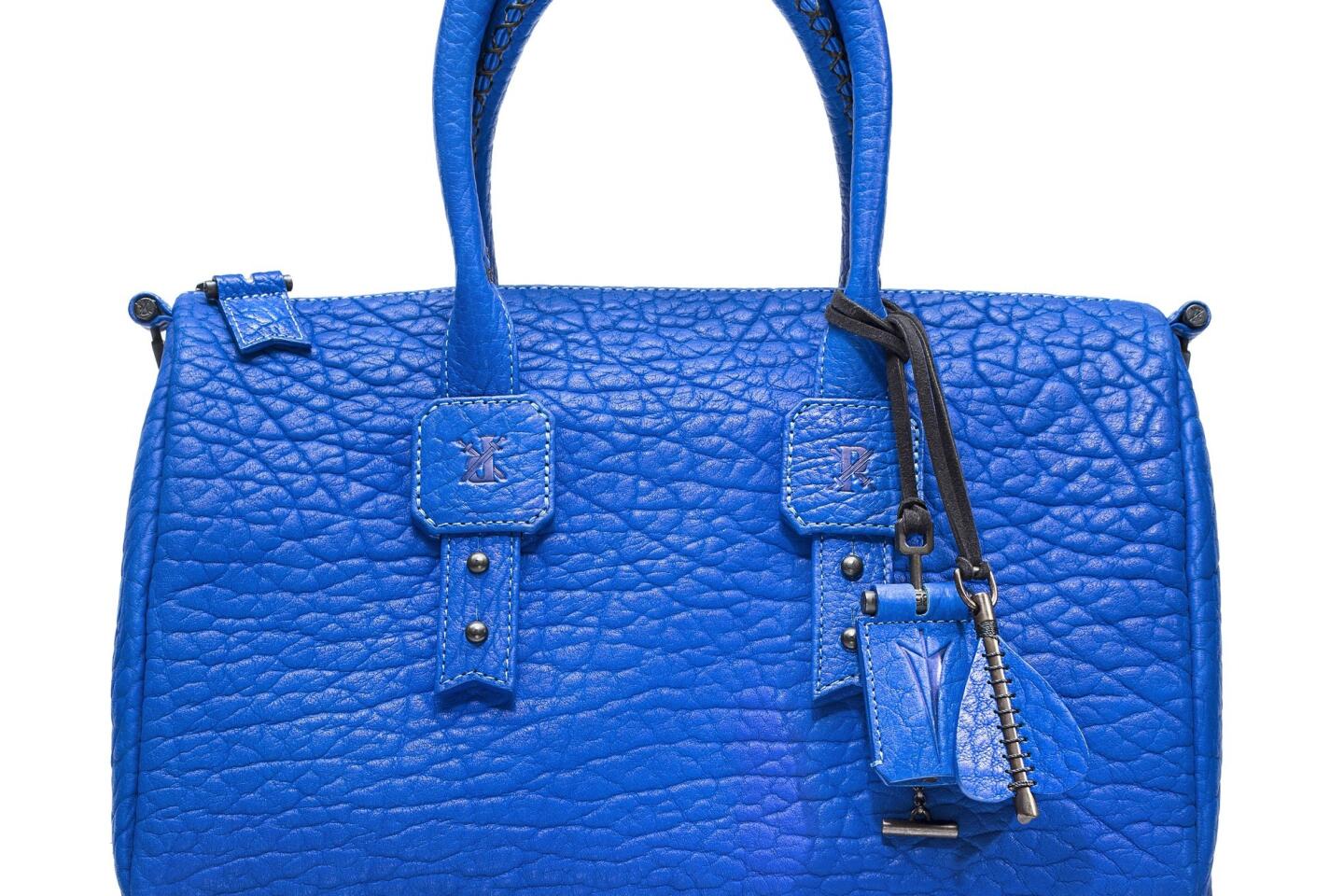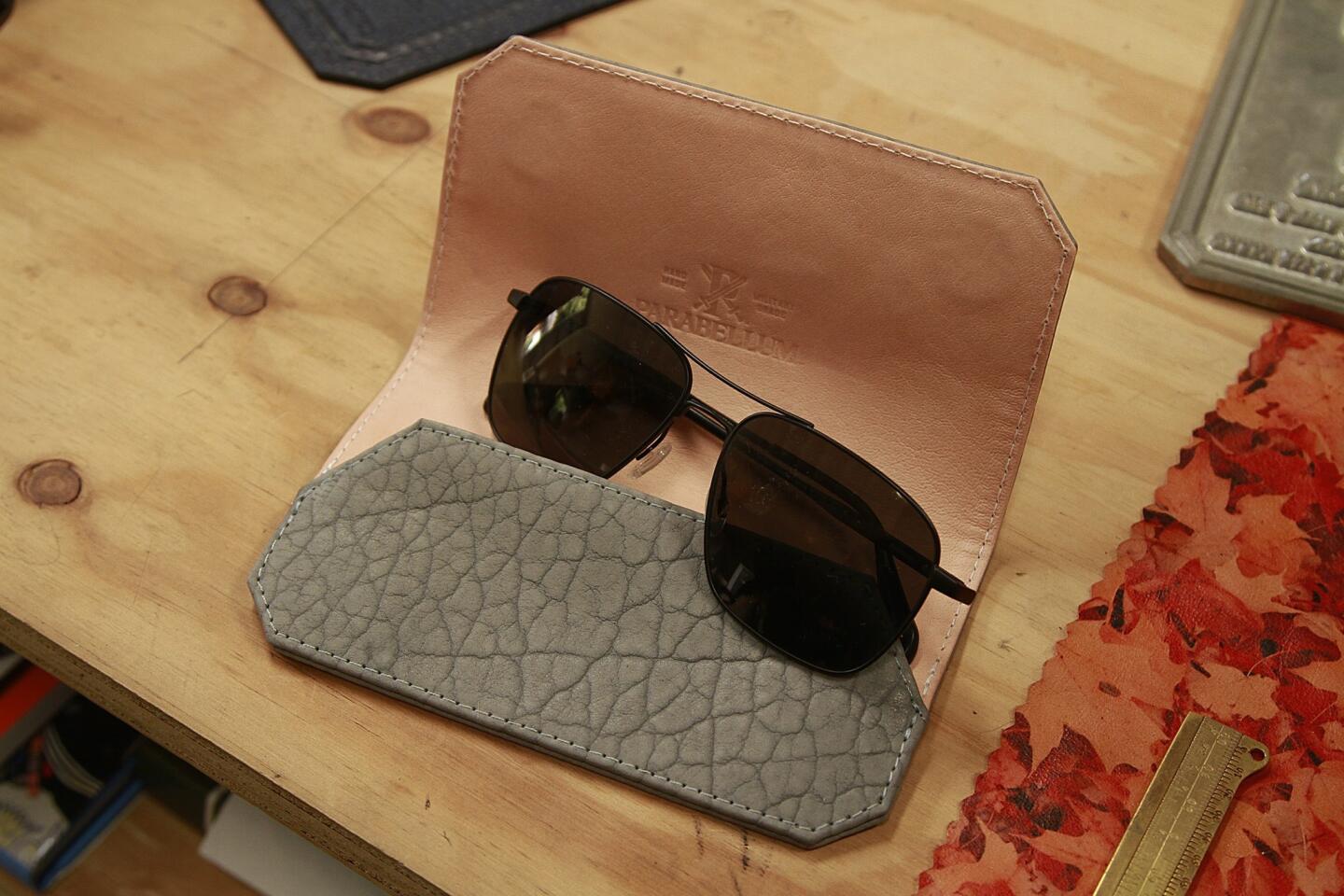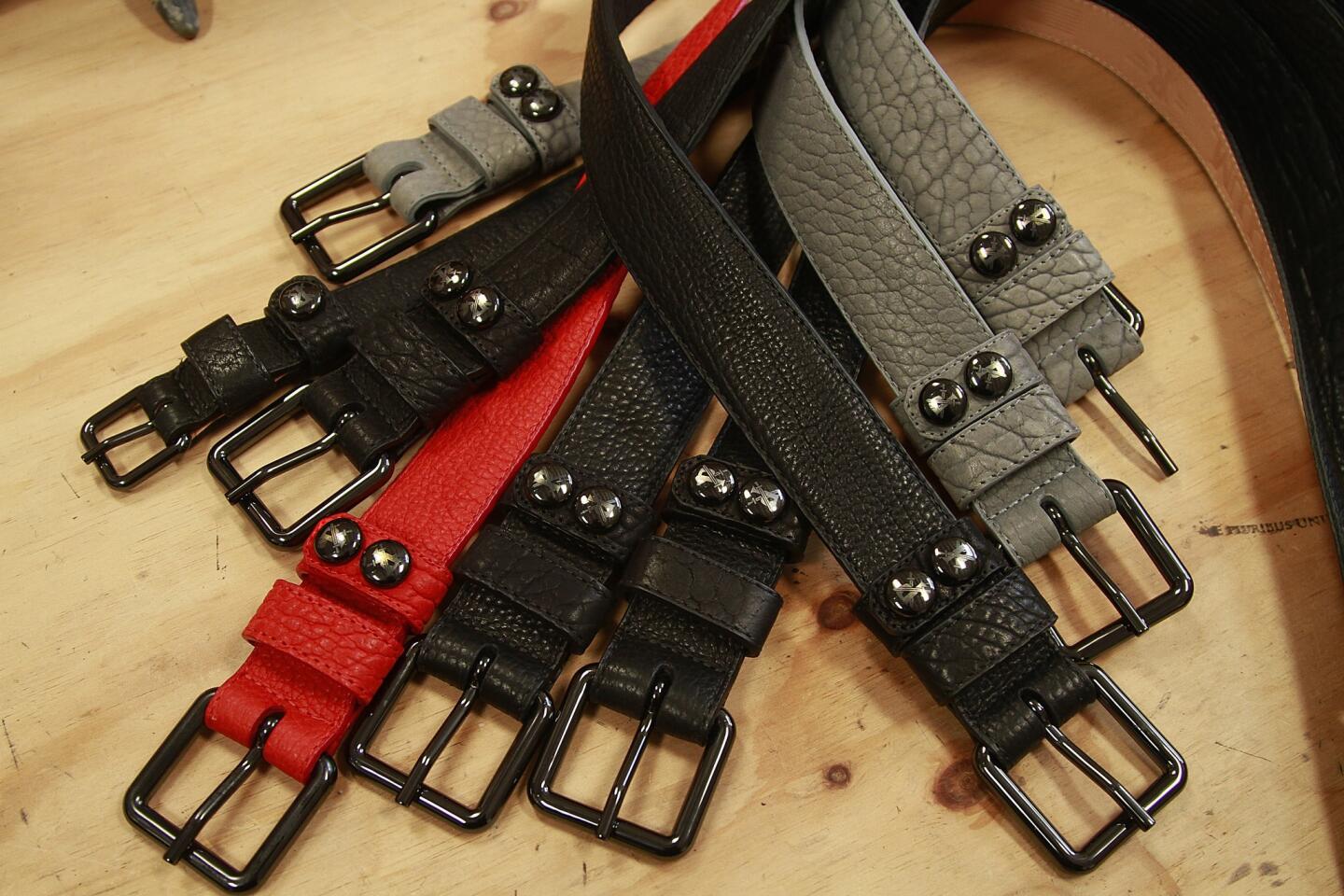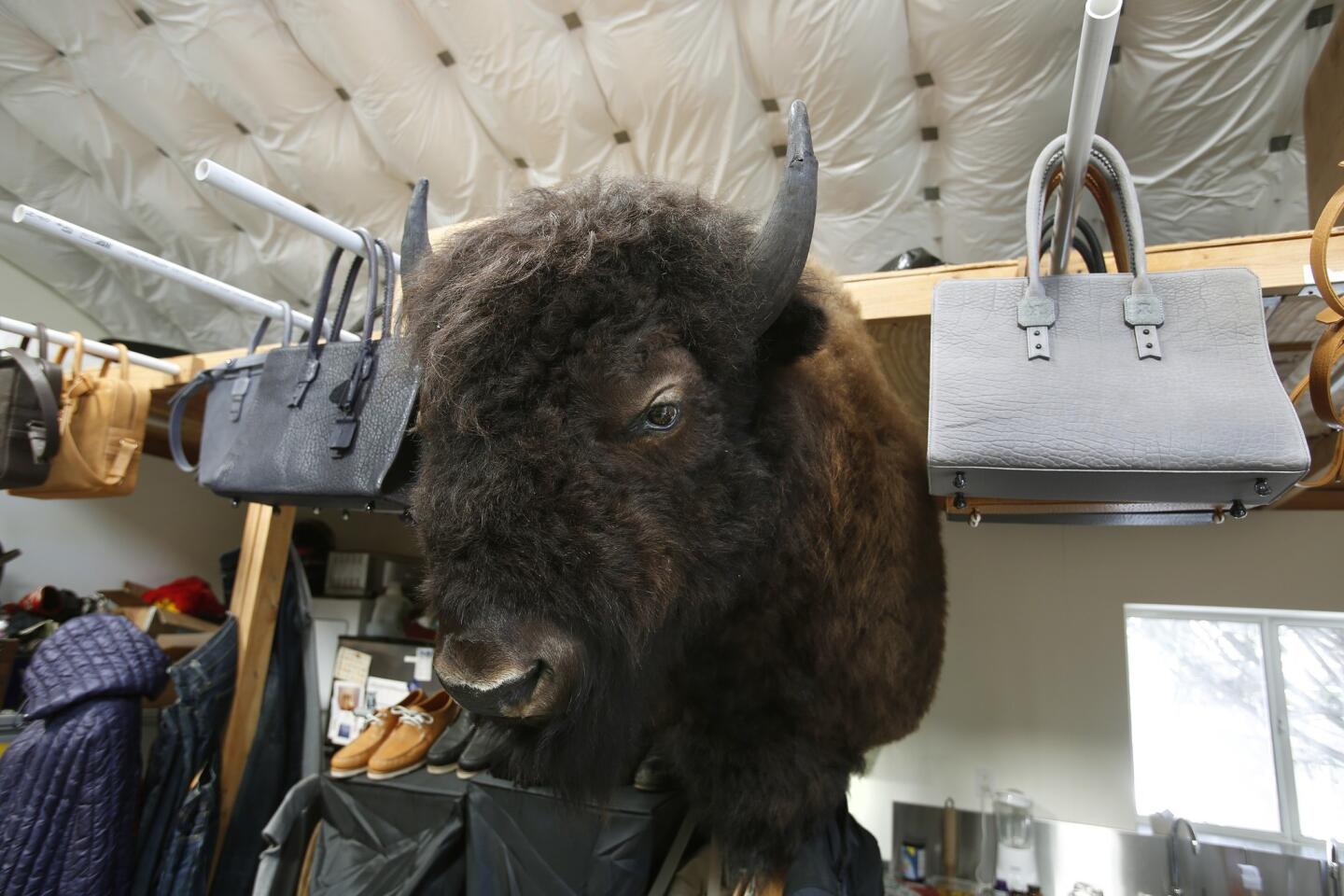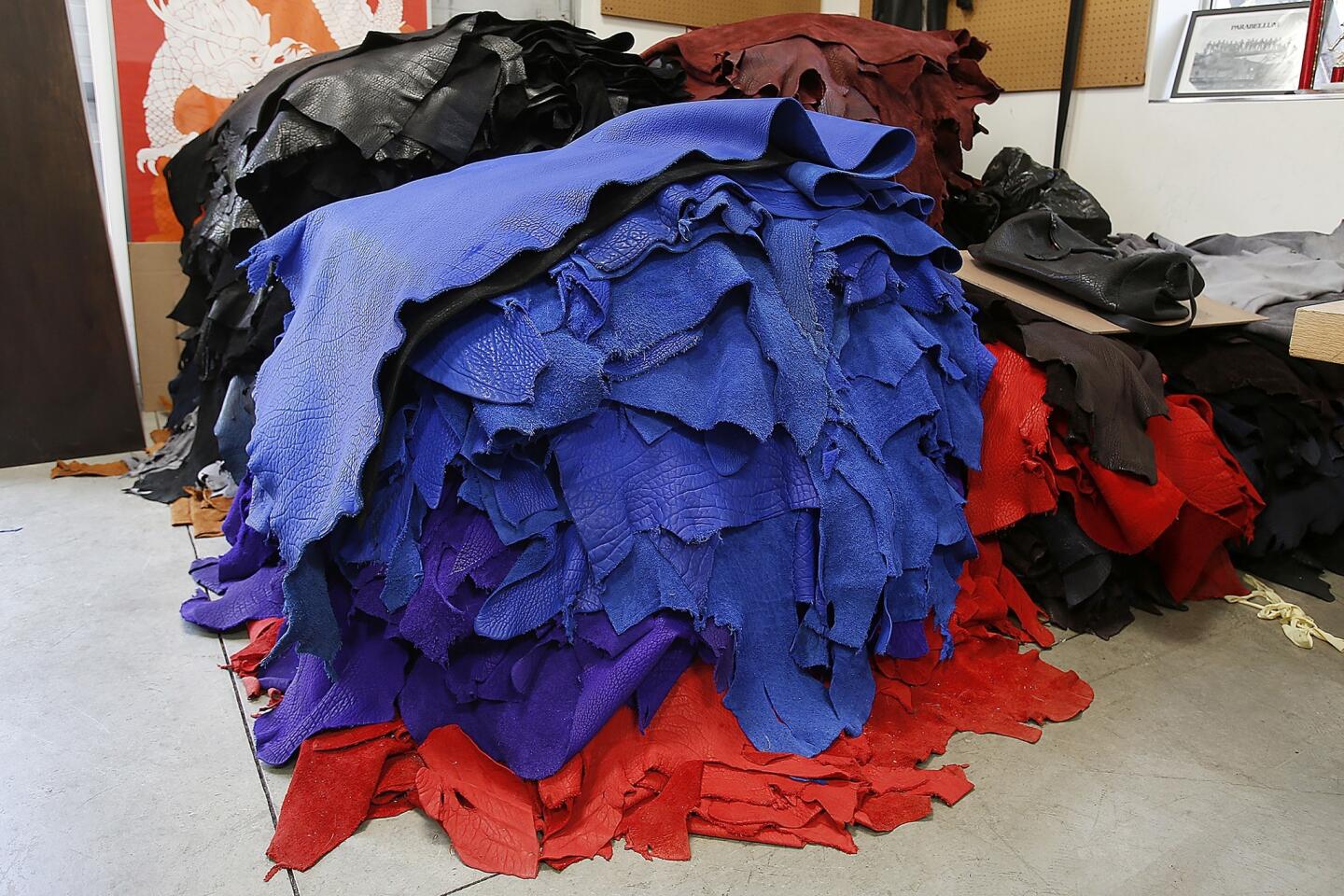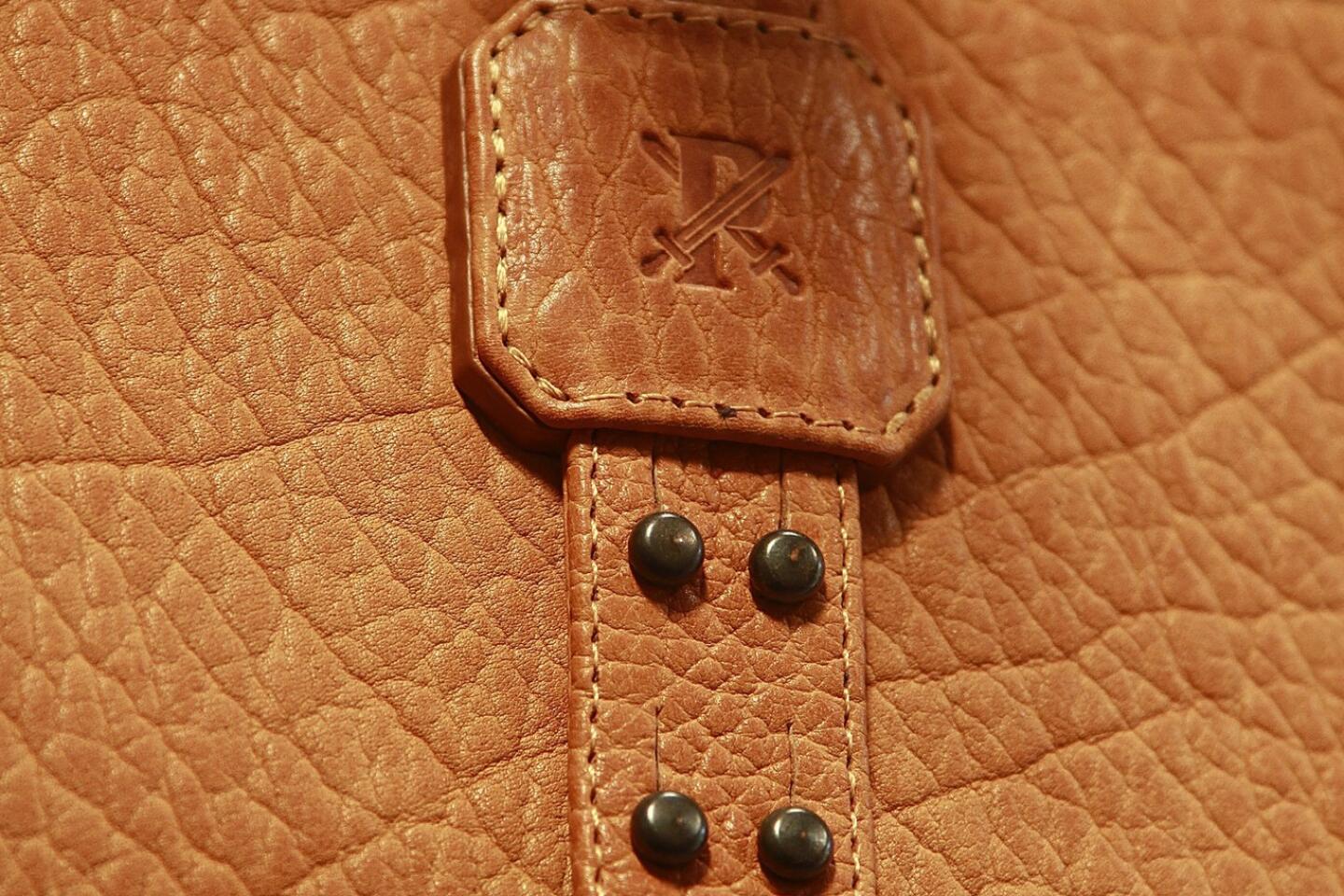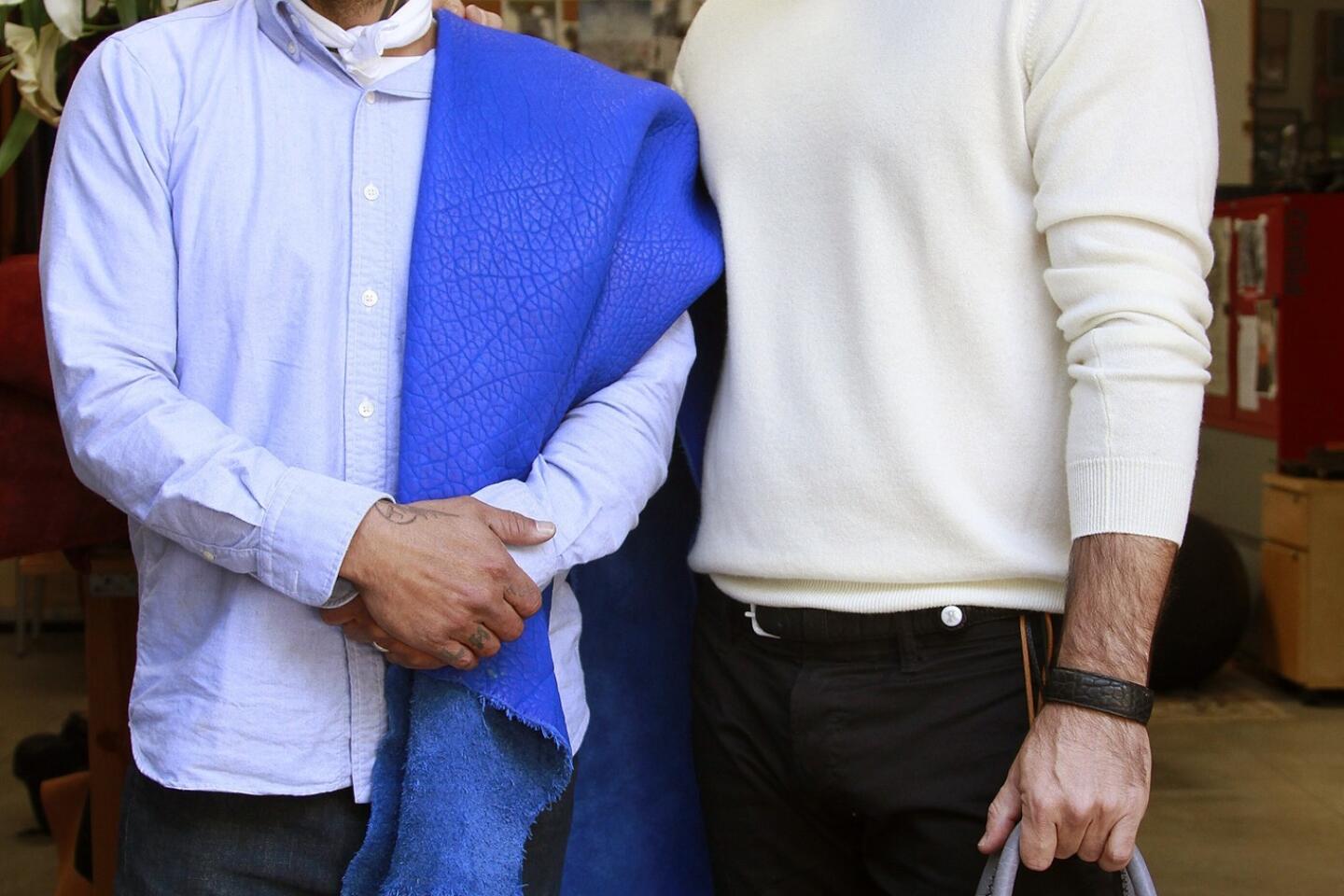Parabellum partners show how the West is worn
- Share via
For most of the last five years, Parabellum has been a kind of two-man exercise in stealth luxury, with co-founders Mike Feldman and Jason Jones meticulously producing a range of high-end, low-profile leather goods from a converted garage in a residential stretch of Hollywood not far from a Honda dealership.
The concept behind the line sounds deceptively simple: Pair smooth, military-grade, high-tech ceramic hardware with deeply textured free-range American bison leather in an exquisitely constructed assortment of goods encompassing $350 wallets, $795 Kevlar-reinforced belts, $2,150 women’s handbags with black ceramic ball-and-claw feet and $2,800 duffel bags. All come in a limited color palette that includes black, gray, navy blue, pumpkin and two shades of purple (including one show-stopping shade so vibrant it seems to somehow hover between dimensions).
In the process, Feldman and Jones haven’t just created a collection that’s made in America but one that reflects American history, technology and craftsmanship — and their own experiences growing up. Feldman points to his grandfather, whom he remembers cutting men’s suits by hand in a Detroit haberdashery, and Jones’ youth was spent in his father’s Western Avenue antique shop.
“We grew up in two different situations in two very different parts of the country, but we share a bond that’s about building things honestly of quality and integrity,” Feldman says. “We look back to the age of our fathers and grandfathers — and all of the tremendous creative and industrial accomplishments of that time — as a high-water mark of American innovation, and we aspire to follow in those footsteps.”
Parabellum’s artisanal approach brings to leather goods what L.A. designer Greg Chait — last year’s Council of Fashion Designers of America/Vogue Fashion Fund winner — brings to cashmere blankets, sweaters and Baja hoodies; the sweating of every detail from source to store.
So it’s not surprising that Parabellum’s founders were among this year’s CFDA/Vogue Fashion Fund finalists.
The leather, for example, is not just from run-of-the-mill bison. As Feldman explains, most are destined for the dinner table long before their hides have achieved the deep creases that characterize Parabellum pieces. “Two to 3 years old is about where they can maximize the profit for the meat industry,” he says. “You don’t get this kind of texture until they’re in the 7- to 8-year-old to 25-year-old range — the herd bulls and the breeding cows.”
The hides are tanned at what Jones calls a “family-run micro-tannery” in the Midwest, dyed and shipped by the pallet-load to Parabellum’s headquarters, where they remain in waist-high stacks until one last trip to a workshop just a few miles away. There, fifth-generation leather workers cut, shape, fold and sew them into sunglass cases, wallets and bags.
Obsessed with the high-tech materials used in the Southern California aerospace industry, the designers invested years of R&D and hundreds of thousands of dollars in working with the military-grade ceramic before they held the first acceptable belt buckle in their hands.
Their first collection hit retail in April 2010, landing in just three stores: Colette in Paris, Maxfield in West Hollywood and Union in Los Angeles.
Today, Feldman estimates that Parabellum (parabellumcollection.com) produces “a few thousand items a year,” including men’s belts, totes, briefcases, women’s handbags, totes and clutches and small accessories, such as wallets and iPhone cases. The retail base has grown to more than two dozen stores globally, including Barneys New York, Bergdorf Goodman and Five Story in New York, the Webster in Miami, United Arrows in Japan and Hostem in London.
The men behind the brand are nearly as much of a visual juxtaposition as the ceramic and leather goods they make. Feldman, 37, a Detroit-raised transplant with an athletic build and boyish good looks, is president. Jones, 42, the brand’s creative director, is a lifelong Angeleno with almost obsidian-colored hair and a bumper crop of tattoos that includes a faint cross inked in the corner of one upper eyelid and a pair of crossed swords across his windpipe.
“Jason’s half Native American and half Japanese Hawaiian, and I’m a Jewish guy from Detroit,” Feldman said, by way of explaining why the words e pluribus unum (“out of many, one”) appear on Parabellum belt buckles, one of the many symbolic details scattered throughout the line. (Many of these reference Freemasonry — both men are involved with that fraternal organization.)
Friends for the last decade, the two met when Feldman, who had invented a sound-vibrating video game chair called the Pryamat, was peddling his wares. Jones, whose design background includes apprenticing with L.A. fashion designer Henry Duarte, happened to be running the Acme Game Store on Melrose Avenue at the time, with a couple racks of clothes he designed hanging in the back.
“I think he bought something like four chairs from me, and I don’t think he ever ended up paying me,” Feldman recalls with a chuckle.
Though the partnership may have started four chairs down, no one can deny that it’s since earned them a seat at the luxury leather goods table.
